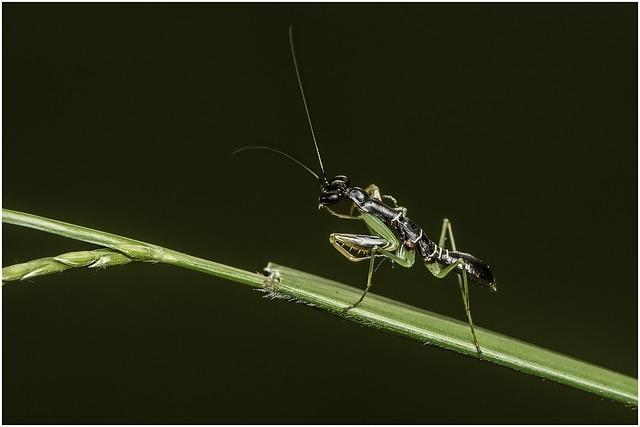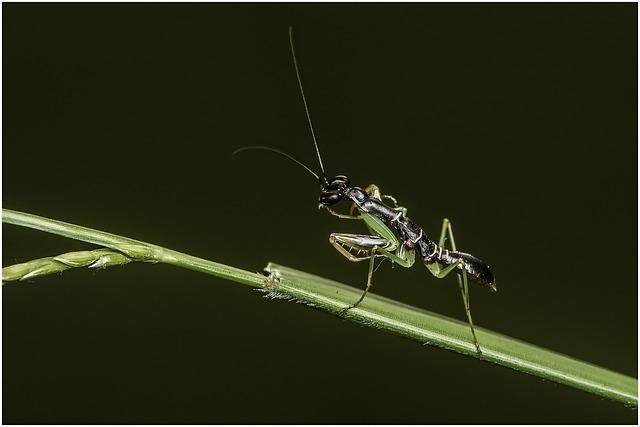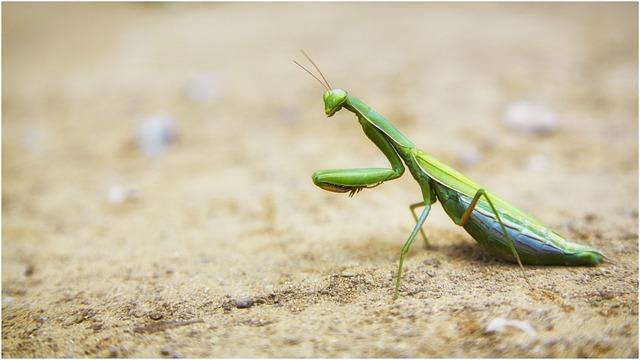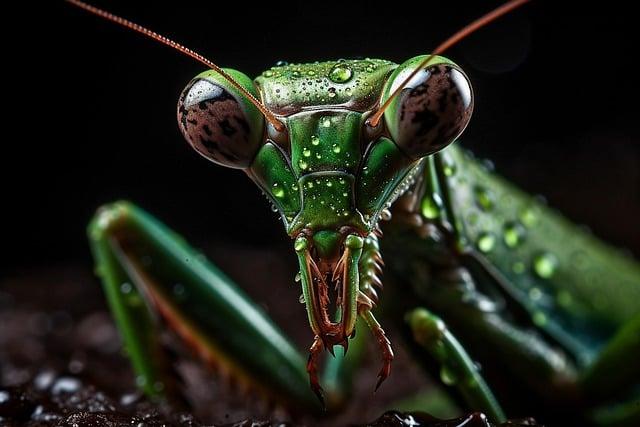- Introduction
- The Natural Habitat of Flower-Faced Praying Mantis
- Unique Physical Characteristics
- Behavior and Hunting Tactics
- Role in the Ecosystem
- Conclusion
- FAQs
- References
Introduction
The Flower-Faced Praying Mantis, often referred to as a living flower due to its captivating appearance, is one of nature’s most unique predators. Known for its disguise that resembles petals and vibrant floral colors, this insect is both a master of camouflage and a fascinating creature in the animal kingdom. In this article, we will explore where these mantises call home, their distinctive physical characteristics, how they hunt using patience and precision, and their importance in ecosystems. Additionally, you’ll find answers to common questions in our FAQ section for those curious about this spectacular insect.
The Natural Habitat of Flower-Faced Praying Mantis

(Image: Pixabay/@TieuBaoTruong)
Flower-Faced Praying Mantises are found predominantly in tropical and subtropical regions around the world, with some thriving in rainforests and others in semi-arid climates. These creatures prefer environments where flowers are abundant, as they rely heavily on floral vegetation for their camouflage. These mantises can often be found flourishing in gardens, meadows, and areas where there is rich vegetation, particularly in Africa and Southeast Asia.
Their adaptation to different environmental conditions allows them to blend effectively into the natural flora, making them difficult to spot by both predators and prey. The warm temperatures of their habitats also play a crucial role in maintaining the species’ procreative and predatory efficiency.
Interestingly, some species even prefer certain types of flowers over others due to the color patterns and shapes that best match their body. Orchids, lavender fields, and blossoming bushes serve as ideal spots for these magnificent arthropods to set up camp.
Unique Physical Characteristics

(Image: Pixabay/@TieuBaoTruong)
What makes the Flower-Faced Praying Mantis stand out the most is its flower-like disguise. Their bodies can adopt an astonishing variety of shapes and colors: from soft pinks and purples resembling delicate petals to bright yellow hues akin to sunflowers. This mimicry ensures they remain hidden right in plain sight when perched on blooming plants.
Another unique feature of these mantises is their large, bulbous eyes, which provide exceptional vision for catching movement. They can move their heads at nearly 180 degrees, giving them an advantage when hunting or evading enemies. Both males and females possess elongated forelegs designed to snatch and hold onto prey in a matter of seconds.
Their size can vary depending on the species, with females generally being larger than males. Some types grow up to six inches in length, while others are much smaller but equally mesmerizing. Their delicate, leaf-like wings allow them to move gracefully across flowers, awaiting unsuspecting prey.
Behavior and Hunting Tactics

(Image: Pixabay/@SaidBraim)
A defining trait of the Flower-Faced Praying Mantis is its remarkable hunting strategy. As masters of ambush predators, they use stealth as their primary weapon. Patience is key for mantises – they can sit motionless for extended periods, waiting for the perfect moment to strike.
When an insect gets too close, the mantis suddenly surges forward using its strong front legs, gripping the prey before it even realizes what has happened. Their razor-sharp forelegs fold together like a pair of clasped hands (hence the name "praying mantis"), ensuring that no prey can escape. Their primary diet consists of small flying insects such as flies, bees, and butterflies.
Additionally, the way they exhibit sexual cannibalism during mating is another notable aspect of their behavior. Female mantises are known to sometimes consume the smaller male after mating, though this behavior isn't always guaranteed.
Role in the Ecosystem

(Image: Pixabay/@tandocjared)
The Flower-Faced Praying Mantis plays a critical role as both predator and prey in its local ecosystem. By controlling insect populations, especially those pests harmful to plants, they contribute to maintaining balanced ecological systems. They help reduce the number of crop-destroying insects, making them beneficial for both natural habitats and human agricultural settings.
Despite being fearsome hunters themselves, the mantis is not without its own predators. Birds, bats, and even larger frogs may target them, especially when the mantises shed their exoskeleton during molting, leaving them particularly vulnerable.
In many cultures, mantises are revered as sacred or good luck creatures due to their grace and predatory prowess, yet they also face threats from habitat destruction and pesticide use, which can disrupt their natural environments.
Conclusion
In conclusion, the Flower-Faced Praying Mantis is one of the most extraordinary insects both in terms of beauty and behavior. From its camouflaging abilities and meticulous hunting methods to its vital role in balancing ecosystems, there's no denying the importance of this peculiar predator. Their impressive characteristics have fascinated humans for centuries, and their adaptive strategies might just ensure that they continue their reign in the insect world for many years to come.
FAQs
Do Flower-Faced Praying Mantises actually look like flowers?
Yes, many species of Flower-Faced Praying Mantises have evolved to mimic flowers in shape and color to blend into their surroundings and avoid predators or sneak upon their prey unnoticed.
Is it true that female mantises eat the males after mating?
While it is true that some female mantises consume males after mating, this behavior is not consistent across all mantis species. It serves as an additional source of protein for females, especially in egg production.
Can Flower-Faced Praying Mantises be kept as pets?
Yes, they can make fascinating pets. However, they require specific living conditions, including appropriate terrariums, humidity levels, and a steady diet of live insects.
How long do Flower-Faced Praying Mantises live?
Most Flower-Faced Praying Mantises have a lifespan of about 6 months to a year, depending on the species and living conditions.
Are Flower-Faced Praying Mantises endangered?
Currently, most species of praying mantises, including flower-faced varieties, are not endangered, but they do face environmental threats such as habitat loss and pesticide use.

